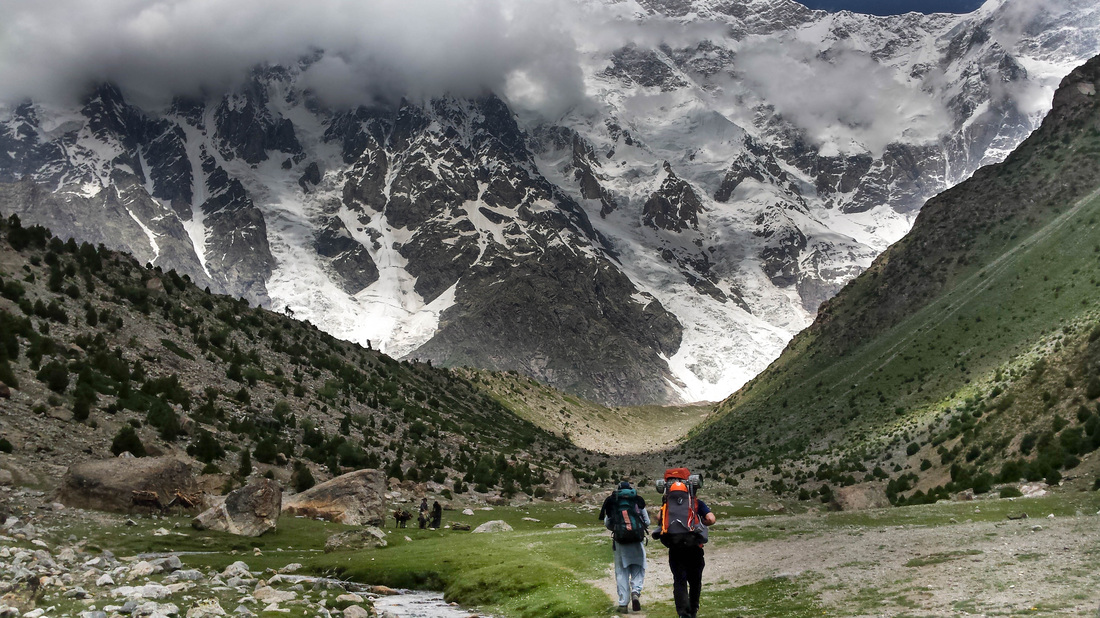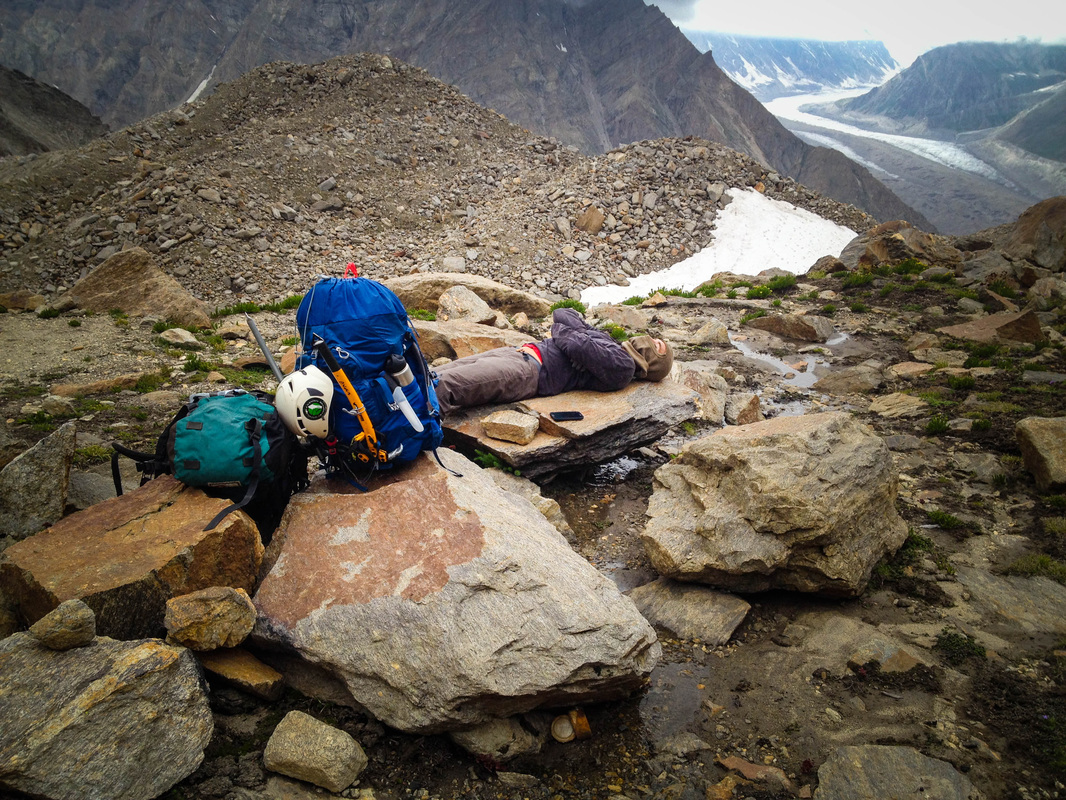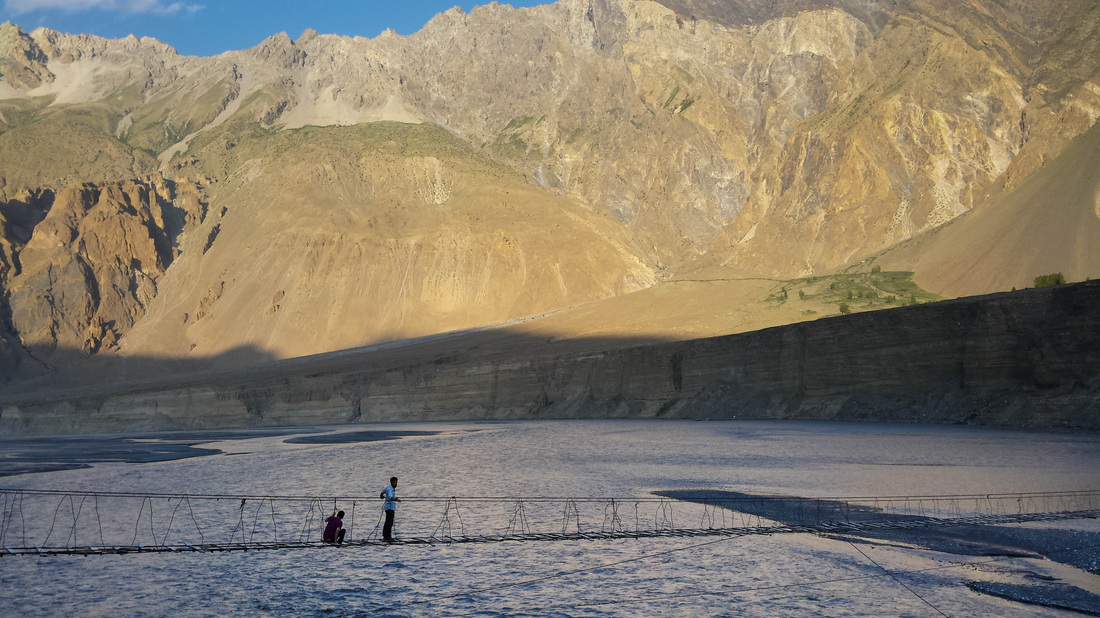By Pericles A. Niarchos
Rupal Peak signified more than an introduction to mountaineering for me. An Eagle Scout who once spent summers in the Adirondack Mountains, New York, I went to college with an interest in the hard sciences and exploration, but after years in Washington, DC, I’d lost touch with that sense of adventure. At 18,500 feet in Pakistan’s western Himalaya, Rupal Peak was a return.
Despite the mountain’s less than formidable status, I had reservations about my ability to make the summit, and about the country’s political climate. Luckily, I enjoy challenges outside of my comfort zone.
Rupal Peak signified more than an introduction to mountaineering for me. An Eagle Scout who once spent summers in the Adirondack Mountains, New York, I went to college with an interest in the hard sciences and exploration, but after years in Washington, DC, I’d lost touch with that sense of adventure. At 18,500 feet in Pakistan’s western Himalaya, Rupal Peak was a return.
Despite the mountain’s less than formidable status, I had reservations about my ability to make the summit, and about the country’s political climate. Luckily, I enjoy challenges outside of my comfort zone.
When I contacted ASC regarding the Snow and Ice project, they linked me with glacial researcher Dr. Natalie Kerhwald, and my expedition partner Clint Montague and I added a crevasse rappel at 16,000 feet for sampling to our climb.
We collected ice samples on day three of our trip, gambling that we’d get a second weather window to summit later in the week. The weather never cleared, but sampling was exciting and unique,
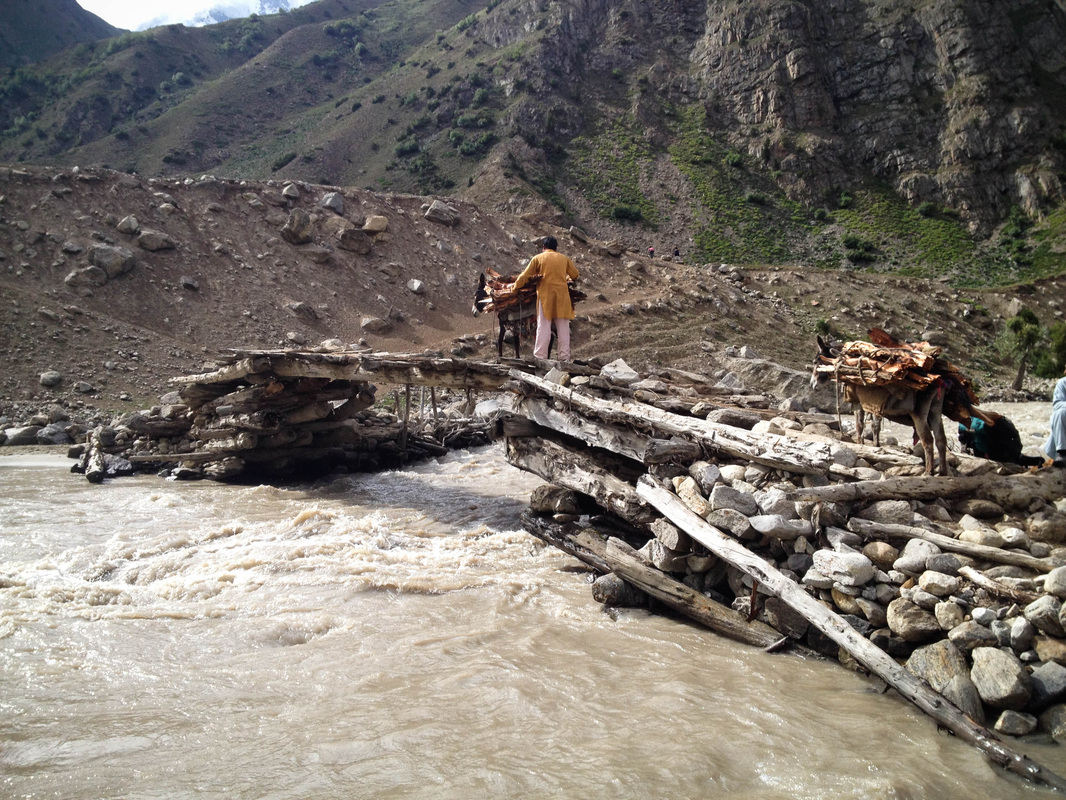
On our hike from the village of Tarashing, we encountered the Rupal River. In the recent past, a violent local tribe forced shepherds and tradesmen to cross only by its bridge, often at gunpoint and with brutal consequences for disobedience. With the establishment of a local police outpost (a large tent with an armed citizen-officer), neighboring villages teamed together to build this sturdy wooden bridge that we used to access the glacier. (Photo by Pericles A. Niarchos)
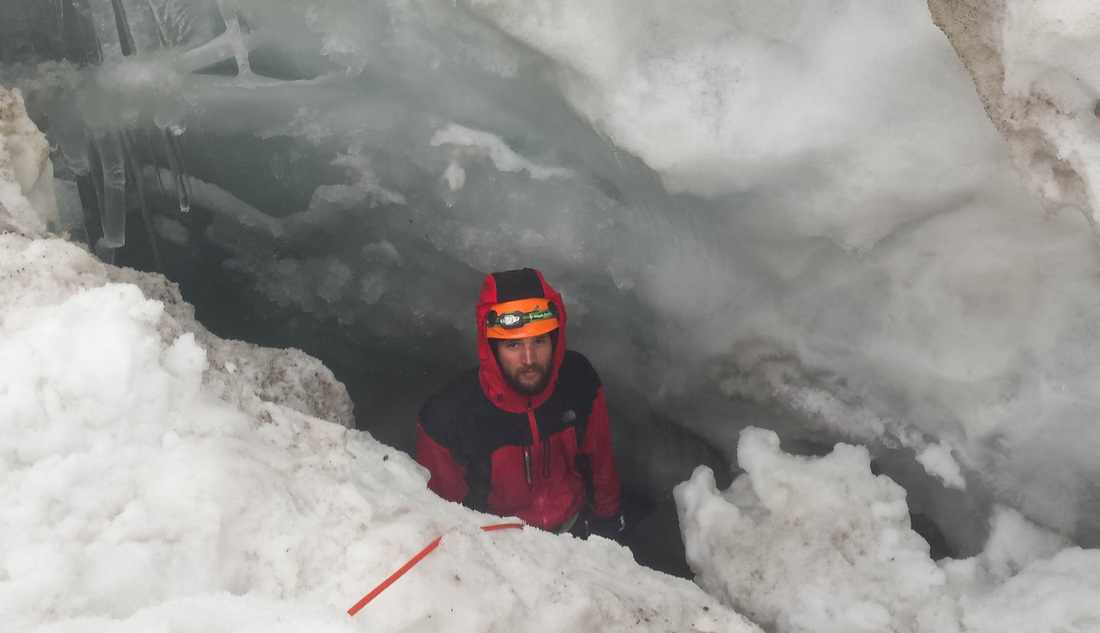
We did our ASC ice sample collection from a crevasse at 16,000 feet during our acclimatization day on Rupal Peak. Here, as Clint prepared to descend into the crevasse, the sound of immense sheets of ice breaking from the icefall echoed like fighter jets all around us. We used our ice axes to chip samples into half-liter Nalgene bottles. Returning to the surface provided an appreciated change in scenery from the cold, damp and confined quarters below. (Photo by Pericles A. Niarchos)
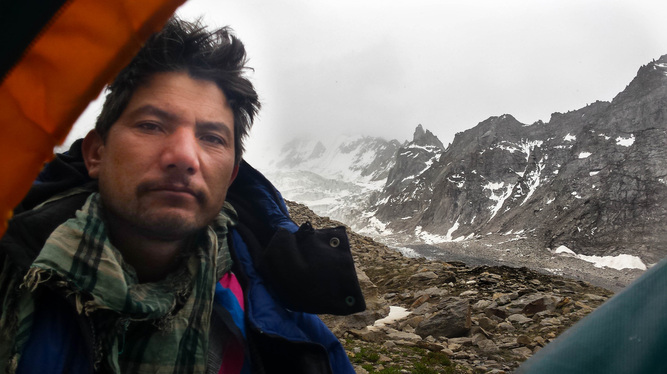
After collecting ice samples, we descended to high camp and waited for another weather window. Illness and low morale found us on 1,000 calories a day as we languished at high camp for three days. Our porter Jamshid frequently checked in on us, asking “how are you?” in as serious and somber a tone as I’ve ever heard. Our guide Bashir later revealed Jamshid mistook the smell of our alcohol-based hand sanitizer for liquor, and thinking we were drunk, was most concerned for our wellbeing. The truth resulted in long-awaited laughter when the issue came to light during our final meal together in Tarashing. (Photo by Pericles A. Niarchos)
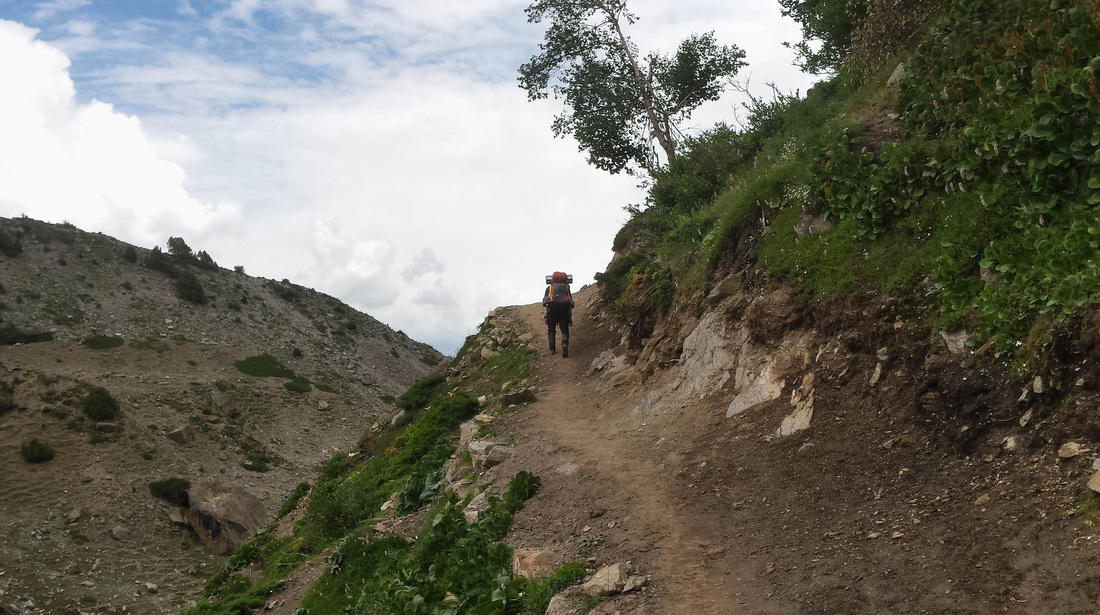
Monsoon season upon us, the clouds closed in, and our native companions told us to summit this time of year would be a stroke of luck. After months of planning and days at high camp, having been only several hundred meters from the summit for ice collections, we abandoned our bid for Rupal Peak and returned to Tarashing. We followed a different trail back into Rupal Valley, dropping from over 14,000 feet to 9,500, making what had taken us three full days on the approach in roughly eight hours. (Photo by Pericles A. Niarchos)
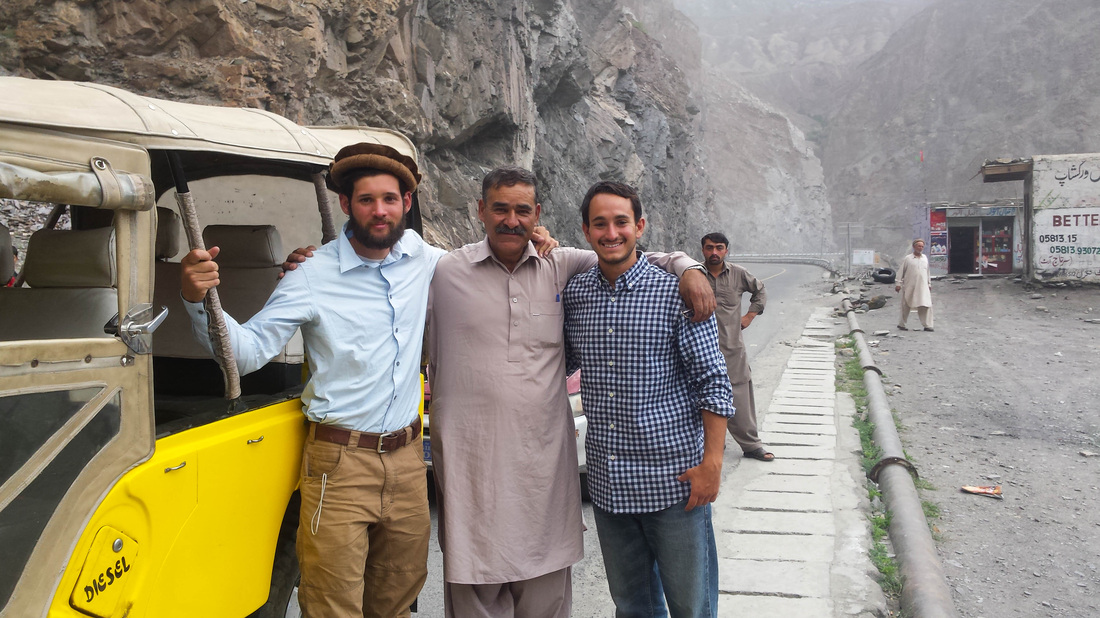
From left: Clint, Bashir and Pericles. After the week together on Rupal Peak, Bashir disembarked from our jeep outside the northern town of Karimabad. He’d convinced us to visit Hunza Valley, his home region. We met his son, embraced and thanked each other. As our jeep rolled away, we immediately felt the absence of Bashir’s reserved but commanding presence. With no means to communicate with our driver, we were at the whim of northern Pakistan’s winding roadways and local people. Just to the north, Shiite protests about Israel’s military operations in Gaza soon presented us with an intense but fleeting linguistic and cultural challenge. (Photo courtesy Pericles A. Niarchos)
Originally from Long Island, New York, Pericles A. Niarchos first backpacked and climbed in the Adirondack Mountains. A Westinghouse National Semi-Finalist at 16 for his research on oyster growth rates and their potential for Hudson River restoration, he has long been interested in science. Now a resident of Alexandria, Virginia, Pericles is considering careers at the intersection of engineering and exploration.
Find more about ASC’s Snow and Ice project on our website, and learn more on our Field Notes blog, Facebook, Twitter, Instagram and Google+.

